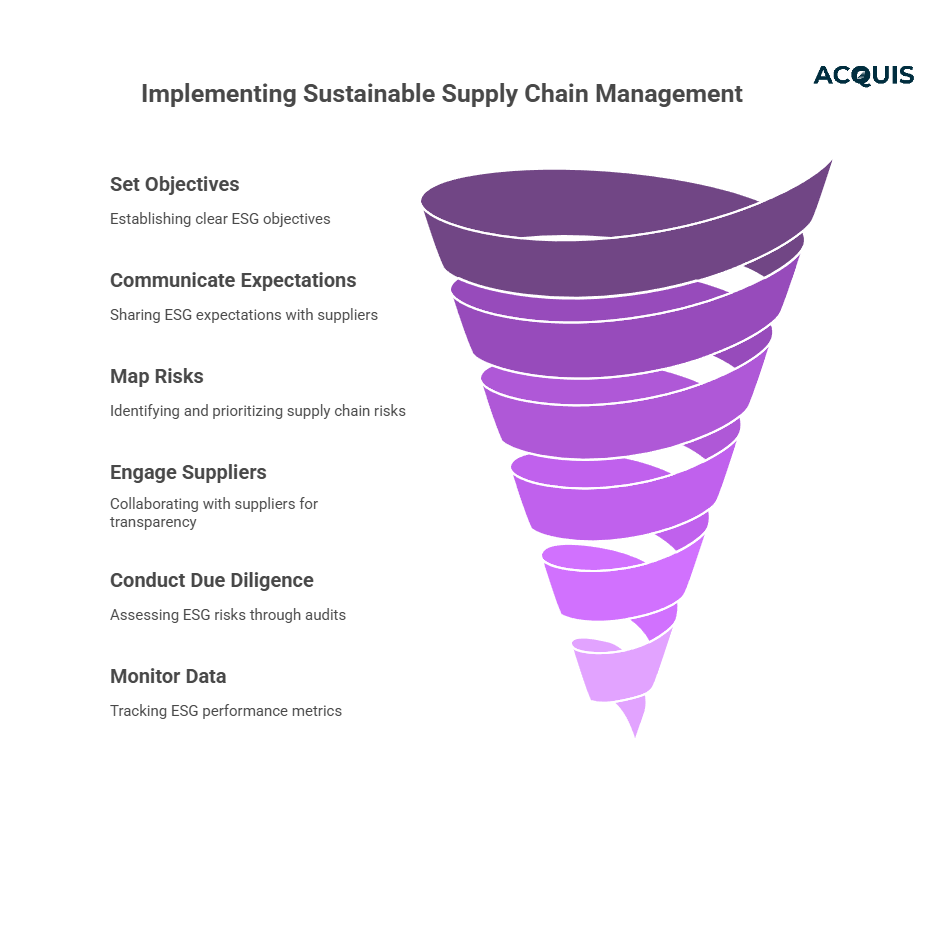Table of Contents
Supply chains are under pressure—from consumers, regulators, and investors. Whether you're responding to the EU’s CSRD, SEC’s climate disclosures, or internal ESG goals, one thing is clear:
Sustainability is no longer optional. It’s a license to operate.
But building a sustainable supply chain system is hard. Fragmented supplier data, regulatory chaos, and internal silos slow progress. That’s where a structured, data-driven approach comes in.
A Practical Framework for Responsible Supply Chain Management
Here’s how your organization can structure a sustainable supply chain management system that works—regardless of industry or region:
- Set Clear Objectives and Roles
Define your ESG vision and assign roles across teams—from procurement and compliance to product stewardship and legal.
- Communicate Supplier Expectations
Share a Supplier Code of Conduct aligned with OECD Guidelines, UNGPs, and applicable regulations. Make ESG expectations part of your onboarding.
- Map Supply Chain Risk
Conduct a materiality-based supply chain risk assessment. Prioritize suppliers based on:
- Region (e.g., CAHRAs)
- Product category
- Emissions profile
- Conflict mineral sourcing
- Engage Tier 1 and Tier 2 Suppliers
Co-create transparency through surveys, capacity-building, and shared dashboards. Use ESG ratings or third-party audits when appropriate.
- Conduct ESG Due Diligence
Use self-assessments, site audits, and certifications (e.g., ISO 14001, RBA, Sedex SMETA) to assess environmental and social risks.
- Monitor and Act on Data
Establish real-time KPIs—carbon intensity, human rights flag rates, waste-to-landfill, etc. Use dashboards for ESG benchmarking and reporting.
- Review Supplier Contracts and Relationships
Factor sustainability performance into sourcing decisions. High-performing suppliers should be rewarded; high-risk suppliers must be remediated or exited.

What’s Slowing Down Your Program?
Even well-intentioned sustainability teams run into roadblocks:
- Disconnected supplier tools
- Lack of compliance automation
- Limited visibility into Tier 2 and Tier 3
Inconsistent regulatory tracking
Without structure, your supply chain sustainability effort turns into a cost center, not a growth lever.
How Acquis Makes Sustainable Supply Chain Management Scalable
Acquis Compliance is purpose-built to simplify and scale environmental and supply chain compliance:
- Data Collection – Automated & Verifiable
Track supplier compliance, ESG metrics, emissions, and declarations from the source using smart survey workflows and integrations.
- Dashboards – Simplified ESG Intelligence
Monitor supplier performance, audit status, and risk flags in real time. Built for CSRD, SEC, and customer RFP alignment.
- Personalized Support – You’re Not Alone
From onboarding to audits, our compliance specialists and customer success team walk with you every step of the way.
- Regulatory Agility – Stay Ahead of What’s Coming
Built-in updates for CSRD, EU RoHS, DPP, REACH, CBAM, and more. No more scrambling for last-minute regulatory compliance.
Book a Free Demo to learn how Acquis helps you turn supply chain sustainability into a strategic advantage.
